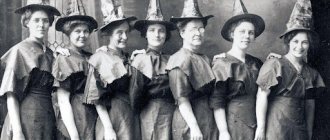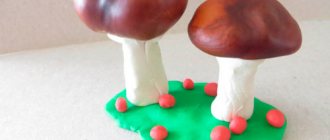“If you are alone at home” (Playing out situations)
«If you're alone at home»
(Playing out situations)
Target:
Teaching children the basics of personal safety.
Tasks:
— Strengthen children’s knowledge about the rules of safe behavior at home
, the ability to correctly and quickly report danger.
— To train children in the ability to make decisions correctly and quickly in an extreme situation.
— Activate the speech and mental activity of children. To promote the ability to clearly and competently formulate one’s thoughts, the ability to explain one’s own behavior.
— Cultivate a caring attitude towards your health.
— Cultivate courage, resourcefulness, determination.
Progress of the training game
.
.
Organizing time.
Guys, we live in a modern and complex world. Life, no matter how difficult it can be at times, is wonderful. No wonder we all value her. However, there are many dangers in the world that await people on their path in life. In order to
To protect yourself in this or that difficult situation or avoid it altogether, you must know what emergency situations exist and how to behave if trouble happens.
But first of all, you should know that in any emergency you need to call the rescue service 01 or 112 (from a mobile phone)
. And rescuers will always come to your aid.
. Conversation. Analysis of emergency situations.
Now we will look at several emergency situations.
— What dangerous situations can happen to you at home? (fire, electric shock, uninvited strangers, etc.)
— What do you think are the main causes of fires?
This:
— careless handling of fire;
— violation of fire safety rules when using electrical appliances, as well as when
furnace fireboxes;
- children's prank with fire.
— How should you behave in the event of a fire?
- Your actions should be as follows:
- if a fire occurs, call 01 or 112 (from a mobile phone, providing the exact address and what is burning;
- if there are adults nearby, call them for help;
- if the room is filled with acrid smoke, cover your nose and mouth with a wet rag, bend down to the floor and urgently leave the room (when making your way through the smoke to the exit, you need to move along the walls to
do not lose direction);
- there is no need to open doors or windows into a burning room, otherwise a stream of air will rush there, which serves as “food”
for fire. Without air, the fire will not spread much;
- if you find yourself cut off by fire or smoke, close the doors tightly, caulk all the cracks with wet rags and clothes, open a window or vent and give signs of help to the arriving firefighters.
— Do you know the rules for safe handling of electrical devices? If handled improperly, they can cause a fire.
1. — Let’s solve
situational problems
. Which guy is doing the right thing?
Task No. 1
.
The table lamp was very bright. Olya took a sheet of colored paper and applied it to the lampshade. The light became soft, it was
to look at the pictures of your favorite book.
Problem No. 2
. Yura knows the procedure for connecting electrical appliances to the network: first, he connects the cord to the device, and then to the network.
Task No. 3.
Sonya was washing the dishes and suddenly remembered that her favorite TV show was starting. She ran into the room to insert the plug into the socket with damp hands.
Task No. 4.
Ira ironed the clothes and placed the iron on a special fireproof stand.
(Right:
2, 4)
.
Physical exercise.
— There are many other situations besides fires. Let's look at them briefly.
2. “Home Alone” .
Here we will spend
plot-role-playing game
“Home Alone”
.
The children are given situations on the cards to act out scenes. And the audience must comment on the actions of the participants, justify how correct they were.
Situation 1.
Vasya is home alone.
The phone rings. The boy picks up the phone and hears an unfamiliar voice: “Hello, are your parents at home?
When will they be back? .
Vasya’s answer: “Yes, at home, but they are busy. What should I give them? Who and where should I call back?”
.
Situation 2.
Alina is home alone. Ring (knock)
in the door.
She looks through the peephole, sees a stranger, asks: “Who’s there?”
The answer was: “Open up, police! The person is feeling unwell, we’ll call an ambulance for you.”
.
Alina’s answer: “Tell me what happened, what address, I’ll do everything myself.”
The boy goes to the phone and calls
an ambulance
.
Situation 3. Sasha is alone at home. Someone is trying to open the door with a key. Sasha asks: “Who’s there?”
.
The answer was: “Plumbers! We are checking the heating system!”
.
Sasha’s answer: “I don’t know anything. Dad will be back from work in an hour, then come over."
.
They continue to open the door with the key. Then Sasha quickly barricades the door with improvised objects, calls 02, then runs to the window and asks for help.
Well done guys, you commented correctly on these possible situations.
Security in the apartment.
If you find yourself at home alone
and the doorbell rings for you - don’t rush to open it, look through the peephole first, if you don’t know the person - don’t open it, move away from the door and call your parents at work.
If unknown persons are breaking into your apartment, immediately raise the alarm: call the police (02)
or immediately to the rescue service.
Break the window, shout to people “Fire!”
(this attracts attention better, hit the battery with heavy objects, shout.
3. Situation
“Caution gas!”
Guys, imagine that you are home alone and you smell gas. What are you going to do? The children answer, and the teacher then summarizes and complements the answers.
If you smell gas in your apartment:
- do not turn on the light or light matches;
— check
whether the taps on the gas stove are closed;
- open the windows and ventilate the apartment
;
- immediately call the gas service number - 04 or the rescue service - 01 or 112 (from a mobile phone)
.
V
. Consolidation.
— What dangerous situations can happen to us at home?
-Where should we report first?
— What emergency phone numbers do you know?
— What, in your opinion, is the main thing in human behavior in emergency situations?
V.
Bottom line.
- What conclusion can be drawn from all this?
— Why is it necessary to know and follow all the rules of safe behavior at home?
Target:
teach children to see, evaluate the current situation, and come up with ways to solve it.
Progress of the lesson
Teacher (suggests a situation): Petya is home alone. The bell rings. A child’s voice behind the door: “I live on the floor above, I went out to take out the trash, and the door to my apartment slammed. The keys were left at home. I'm cold and don't know what to do. Help me!" What could happen next? Children: - Petya will open it, and then he’ll come up with something. For example, he will call the police, call his parents, neighbors. “He’ll try to break the lock, and if that doesn’t work, he’ll invite you home.” Let it warm up. - No, Petya definitely won’t open it! Is it dangerous. What if it was the bandits or the gypsies who changed their voice? Adults can speak in a child's voice. But Petya doesn’t see who’s standing behind the door.
“And on our balcony the window looks out onto the entrance, and you can see who’s standing at the door.” If it's a child, you can open it. (Children agree.) Teacher: Is it safe?
Children: What if bandits or gypsies persuaded the boy to ask for help for a toy? And when Petya opened it, they burst in. No, he won't open it. Yes, it's better not to open it. Teacher: Do you think it’s better not to open it? But perhaps the boy is in trouble and asks for help. And Petya will refuse? Children: -We need to come up with something without opening the doors. You can call the police and tell the address, they will come and help. And if there are bandits, they will take it. —You can shout for help from the balcony, knock on the neighbors’ walls.
Teacher: Well, what if Petya lives high? If he screams, no one will hear. And the neighbors may not be at home. Children:
“Then you can throw a bag of water onto the street, it will burst, people will raise their heads up, and Petya will send them a letter for help.”
- No, you can pour on people, and then Petya will be scolded.
— Petya should ask for his parents’ phone number and call them. That's all.
- What if the boy doesn’t remember?
Teacher: What if the boy doesn’t have a phone at home? What will he do? How can Petya help the boy without putting himself in danger? (The children are asked to break into pairs and play out the current situation. A screen door is placed. Task: Vasya must convince Petya to help him, and Petya must do something without putting himself in danger. Next, three pairs of children act out this situation. The next option turned out to be the most successful and, in the opinion of the children, solved the problem. Ira in the role of the boy, Arina in the role of Petya.) Boy (crying, persuading): Open up! Petya: I won’t open it. And don't cry. You can't open the door with tears! Boy: But I'm cold, help me! (Very pitifully.) Imagine yourself in my place! Help, open it! (The boy first emphasized that Petya should open the door immediately, then he began to motivate by saying that he was cold, and then he invited Petya to try the situation on himself.) Petya: Calm down, I won’t leave you. Now we’ll come up with something... (Pause.) First, start jumping, it’s warmer as you move. (The boy jumps.) Boy: Well, what next? Petya: Try ringing the doorbell of neighbors living on another floor. There will definitely be adults at home somewhere. Exactly, Aunt Tanya lives on the third floor, she has a telephone. Run to her and call the police. Hurry up before you freeze. Boy (meaningfully): Well, thank you, I helped. Teacher: Did Petya help the boy without opening the door? Children: Yes! The most important thing is that Petya was not in any danger. And the boy, following Petya’s advice, will definitely find help from other neighbors. Teacher: Would everything have ended so well if Petya had opened the door? Children: Yes and no! Anything could happen! Teacher: Continue at home with your parents to compose a story in which Petya opened the door.
Educational project “Home Alone” for children in the senior group of kindergarten
Project “Home Alone” for children of senior preschool age
Author: Pigalkina Yu.S. Description of work: this project is designed for children of senior preschool age.
Aimed at developing the foundations of safe behavior in everyday life. Project “Home Alone”
Type of project : practice-oriented. Project duration : short-term. month. Project participants : children of the senior group, teacher, parents. Relevance of the topic: from the first years of life, a child’s curiosity, his activity in matters of knowledge of the environment, encouraged by adults, becomes very unsafe for him. It is very difficult to determine whether a person behaves correctly or incorrectly in certain circumstances. However, it is necessary to highlight such rules of behavior that children must strictly follow, since their health and safety depend on this. Problem: not all children know safety rules. These rules should be explained in detail to children, and then their implementation should be monitored. However, safety and a healthy lifestyle are not just the sum of acquired knowledge, but a lifestyle, adequate behavior in various situations. The goal of the project: to develop practical skills for safe behavior of children in various situations at home. Project objectives: “Social and communicative development”:
1. to develop safe behavior skills in children at home through practical activities;
2. develop the ability to behave adequately in various situations. 3. develop skills in safe handling of piercing and cutting objects, learn to provide first aid for puncture and cut wounds; 4. develop fire safety skills, fire behavior skills, teach first aid for burns and poisonings 5. expand the pedagogical literacy of parents on safe behavior at home “Speech development”
: consolidate the ability to write short stories on the topic of the project;
“Artistic and aesthetic development”
: practice solving riddles;
strengthen the ability to listen carefully and answer questions about the content of what you read; consolidate the skill of coloring outline images of objects, the skill of drawing familiar objects. Preparatory stage: • Examination of illustrations on the topic of the project. • ask parents to take an active part in the implementation of the “Alone at Home” project Forms of organizing the project: 1. Conversation. 2. Didactic games. 3. Quiz. 4. Independent activity of children. 5. Reading works of fiction and encyclopedias. 6.Playing out problematic situations. 7. Drawing. 8. Questioning parents. 9. Consultation for parents. Materials : coloring books, colored pencils, paper, felt-tip pens Project implementation stages: Stage I – preparatory:
1. Survey of children on the problem.
2. Definition of goals and objectives. 3. Creation of the necessary conditions for the implementation of the project. Stage II – main (practical):
1. Introduction into the educational process of effective methods and techniques to expand the knowledge of preschoolers about the safe behavior of children at home 2. Conversation “There are different objects: dangerous and safe” 3. Drawing on the topic of the project.
4. Reading. 5. Development of rules “I was left alone at home” 6. Development and accumulation of methodological materials, development of recommendations on the problem. Stage III - final:
1. Processing the results of the project implementation.
2. Presentation of the project “Home Alone”. At the end of the “Home Alone” project, activities in the chosen direction will be continued in special moments, since it is necessary to develop skills for safe behavior of children in various situations at home. Work with parents: selection of material on the topic of the project, questionnaires, advice and recommendations to parents “How to spend a day off”, “What objects surround the child at home” Project diagram Game activity
: D/games “Dangerous - not dangerous”, “Home Alone” Playing up problematic situations
Social and communicative development
: Conversations “Alone at home”, “There are different objects: dangerous and safe” Playing out problem situations
Speech development:
Reviewing and composing a story based on illustrations on the topic of the project
Health and physical development
: Development of rules “I was left alone at home”
Cognitive development
: Reading and viewing the encyclopedia “Pochemuchka” Quiz “Home Alone”
Artistic and aesthetic development
: Selection of riddles, proverbs, poems on the topic of the project Guessing riddles about objects Reading fiction on the topic of the project Drawing on the topic “Dangerous objects” Drawing “Rescue vehicles”
Expected results. • Children
: The participation of children in this project will familiarize them with the rules of safe behavior at home •
Parents:
Improving the pedagogical culture of parents. Establish trust and partnership relationships with them.
Quiz “Home Alone”
Educator : We have talked a lot about dangerous and non-dangerous objects that surround us at home, and I invite you to take a quiz today to find out how you have learned the rules of behavior in everyday life. We need to split into two teams. (Children are divided into teams, choosing a token, teams are formed based on the color of the tokens) During the quiz, each team receives a token of its color for a correctly completed task. Let's start with a warm-up. 1. Warm-up (Say a word) First team A coal fell on the floor, The wooden floor was lit, Don’t look, don’t wait, don’t stand, But fill it with... (water). If suddenly the electric iron gets hot, what should you kids do? Remove the plug from...(socket) Second command If the little sisters light matches at home, What should you do? Matches right away...(take away) If suddenly a fire breaks out, You must immediately call the fire department, About the fire...(report). 2. Choose a car. There are cars of different services in front of the children. According to the teacher's instructions, the children choose the right car. After selecting a car, find a card with the phone number of this service. 3. Telling poems Each team recites a poem on the topic 4. Make up a story based on the picture. Each team is given an illustration of a situation that happened in everyday life. Children make up a story and eventually pronounce rules of behavior in everyday life. For example: In the first picture. Apartment, something is burning slightly on the floor, a girl pours the fire from the kettle. On the second picture. Apartment, the curtains and part of the floor are on fire, the boy runs out into the stairwell. 5. D/game “Name the objects” Children take turns naming dangerous objects in everyday life. Whose team finishes calling last is the winner of this task. 6. Sports competition-relay race “Take the medicine to a friend.” Educator : Your friend is sick and cannot go to the pharmacy himself, but he lives far away, no public transport goes there. To get to it, you need to jump over a ditch (harnesses), climb through a tunnel (arc), walk along a narrow bridge (rope), jump over large bumps (cubes). Whose team will complete the task faster? (Each child has a skittle - a bottle of medicine, on the chairs there is a doll - a friend to whom this medicine must be delivered). 7. Draw Each team is offered a sheet of paper on which they must draw the rules of safe behavior in everyday life. At the end of the quiz, the results are summed up and the winning team is awarded.
We recommend watching:
Project in kindergarten for older preschoolers 5-7 years old on legal topics Project in the senior group of kindergarten Project in the senior group on the topic “Trees and shrubs in spring” Project in the senior and preparatory group of the kindergarten
Similar articles:
Project for children of the senior group “Our cheerful garden”






